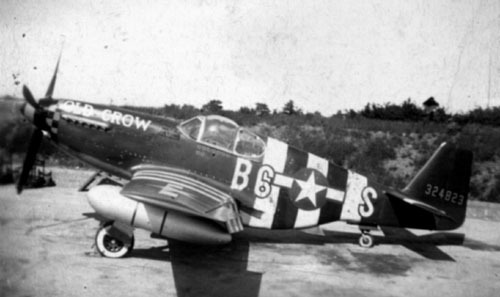- Yes
- No
Hello everybody. I’d like to suggest the North American P-51B-5 Mustang for US aviation in War Thunder. The P-51B-5 was the subsequent subvariant of the P-51B-1. Like the P-51B-1, the B-5 still had a smaller fuel capacity, and this subvariant had seen more action in early 1944 over Europe. It also received the British-designed Malcolm Hood canopy, which improved pilot visibility and safety compared to the earlier framed “razorback” canopy.







I made this suggestion to request more World War II–era aircraft for War Thunder. The P-51B-5 was an important subvariant of the Mustang B-series and deserves a place in the US aviation tree. For the game, the P-51B-5 should also feature the Malcolm Hood canopy to offer players a razorback Mustang with a bubble-style canopy and greatly improved rearward visibility.
In terms of performance, the P-51B-5 would fly almost identically to the P-51B-1, previously suggested, since both used the Packard-built Merlin V-1650-3. However, the early-production B-5s I am suggesting lacked the later field modification of an 85-gallon fuel tank behind the pilot’s seat. Without this extra weight, the aircraft was lighter, more stable, and handled better, particularly in directional stability, giving it an edge over the in-game P-51C-10. Simulator players would especially appreciate this version, as Malcolm Hood’s wider view significantly improves situational awareness in combat.
Because of its historical importance and unique qualities, the P-51B-5 with Malcolm Hood would make an excellent addition to the P-51 family in War Thunder, whether as a battle pass reward, event vehicle, premium, or squadron aircraft. It would be a welcoming addition to the P-51 family for the dedicated completionists.


- Technical Order No. 01-60JD-1 Pilot’s Flight Operating Instructions P-51B-1 Airplane (1 July 1943)
- P-51 Mustang in Action - Aircraft Number 45 (1981)
- P-51 Mustang in Action - Aircraft Number 211 (2008)
- P-51 Mustang in Detail & Scale Vol. 50 Part 1 (1996)
- P-51 Mustang Performance
- P-51 Mustang Variants - P-51B - MustangsMustangs.com
- P-51 Mustang Specifications - MustangsMustangs.com
- North American P-51B/C Mustang
- P-51B-1-NA | This Day in Aviation
- North American P-51B Mustang | Plane-Encyclopedia
- North American P-51 Mustang - Wikipedia
- Rolls-Royce Mustang Mk.X - Wikipedia
- North American P-51 Mustang variants - Wikipedia
- James H. Howard - Wikipedia
- “DING HAO!” | This Day in Aviation
- Dominic Salvatore Gentile - Wikipedia




